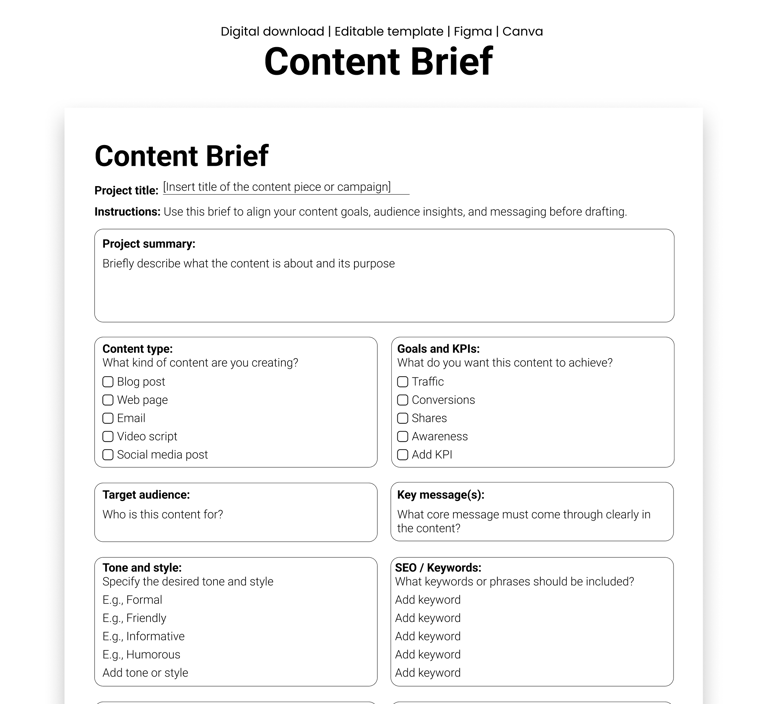Signs your content brief process Is slowing you down
Does your team experience friction prior to writing content? Then your present briefing process may be part of the problem. These are the common signs to watch out for:
Infinite feedback loops due to briefs not being up-to-date with the latest direction
Writers and designers working in silos, leading to fragmented user flows
Divergent expectations, usually brought about by briefs which are either too detailed or ambiguous
People not reading the brief altogether due to the length or irrelevance of the information
If any of these sound familiar, your team might be ready for a more agile approach.
When to skip the PDF
Not all projects need detailed documentation. In fast-moving environments, static or fixed content briefs can become outdated before delivery. The following are instances where agile content briefs work better:
Early-stage sprints: Ideas are fickle and can change quickly; committing to a fixed brief at this stage can box you in and restrict creativity.
Co-creation sessions: When writers, designers, and product managers work together live, a formal brief is rarely needed, just shared understanding.
MVPs and quick experiments: You're trying things out fast. What you want is a clear understanding of goals, not pages of background.
Tools-first workflows: If your team works directly in Figma, Notion, or a whiteboarding tool, creating a separate doc can add unnecessary complications to your workflow.
What to use instead
Agile teams require tools that support real-time content collaboration and fast iteration. Here's what works well:
Create lean briefs in collaborative tools: Write your content briefs in Notion, Confluence, or FigJam. Make them concise, scannable, and easy to edit. Use templates that grow with the project.
Real-time conversations: Use Slack huddles, quick video chats, or async voice notes to align fast. Sometimes, five minutes of conversation can save hours of writing.
Work inside the design: Rather than separating content and design stages, embed your copy in Figma, Miro, or your design tool of choice. Use sticky notes, side comments, or live components to keep everything visible.
Shared briefing templates: Set up templates that include only the basics like project objective, key messages, user insights, tech limitations, success criteria, etc
An extra tip is to allow everyone to contribute. Shared ownership leads to better outcomes.
Tips for making agile content briefs work
Here's how to make your agile content briefs useful and usable:
Make it focused: Identify problem, audience, and objective; that’s enough.
Link, don't dump: Cite applicable documents or previous research, but don't overload the brief.
Start with user needs: Ground the content in what real people need to do, feel, or know.
Make it collaborative: The brief should be shaped by writers, designers, product managers, and researchers.
Treat it as a live document: Revise it as circumstances evolve. Pin it in Slack or your team hub so everyone is on the same page.
The best content briefs are not sitting in a folder somewhere; they exist within your workflow. They move with your team, adapt to changes, and bring everyone together to achieve the goal of clear, user-focused content.
That doesn't mean static briefs should be disregarded entirely. They can be used in big campaigns, handoffs, or stakeholder communications. But for multidisciplinary and agile teams, agile content briefs help you collaborate better and progress faster.






